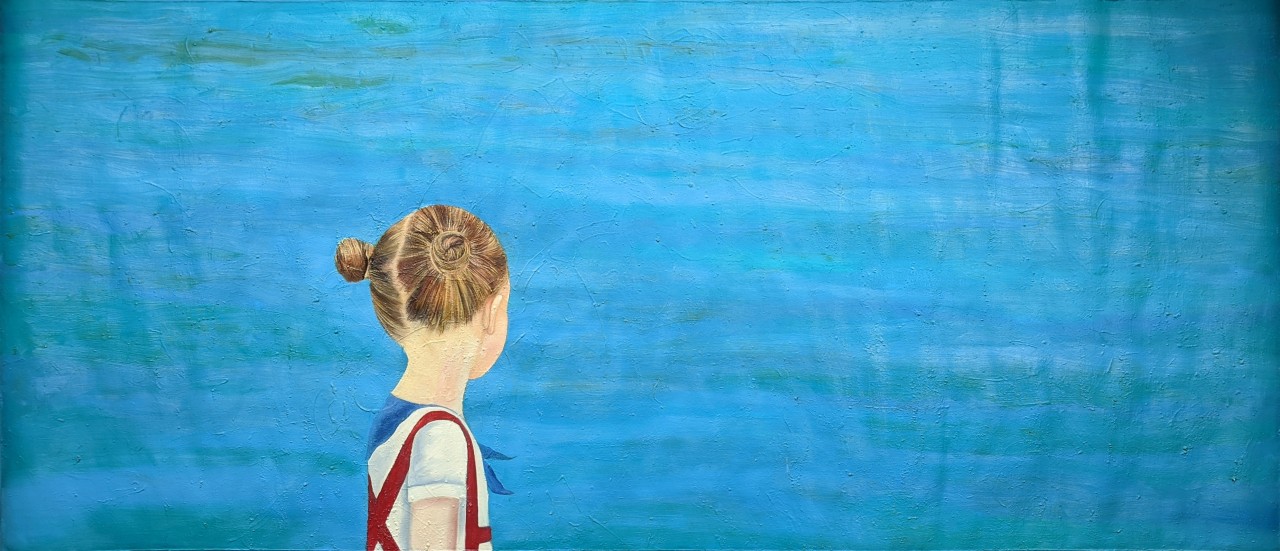
The Saddest Picture I Have Ever Seen
Hope, or the lack of it, is the subject of Jerry Saltz's article on New York Magazine, featuring commentary about Botticelli's painting La Derelitta. The art critic names the artwork, which depicts a woman sitting on the ground in despair, in front of a closed gate on a stone wall, as the saddest picture he has ever seen. Or, in his words, "a metaphysical crucible filled with the woes of the external world, invisible emotions, shame, wailing last things, cataclysmic loss, silence, final journeys, the closing down of life, demonic intensity, and the retraction of self."
I have my own saddest painting I have ever seen. And unlike Saltz's experience, it did not strike me at first. Maybe that is because the artwork is not a literal despair scene. Instead, it has beautifully crafted colors and serene quality. I first saw the painting at Silvestre's art studio. He told me that it was his last interaction with that particular canvas after some ten to fifteen prior oil scenes, none of which pleased the artist. The amount of paint on the canvas turned it perceptively heavy and stiff.
The painting composition seems simple: an immense turquoise background, only broken by the torso and head of a young girl in a typical Cuban school uniform - which Cubans refers to as La Pionera. She has her back to the viewer, facing an infinite sea of blue. The girl is slightly dislocated to the left, and the picture's CinemaScope quality (it is 100 inches large by 40 inches high) immediately invites the viewer into the scene. Then, it is possible to perceive the undertones of blue, green, and white of the background, resembling Cuba's shore vision of horizonless sea and sky. And then, there she is in magnificent detail, contrasting with the blur around. Her carefully arranged hairstyle, her pristine uniform, the freshness of her skin, cast no doubt that she is loved.
As I kept seeing the painting in the artist's studio, it made me increasingly unrest. Why is she looking at the sea? What is she feeling about it? I feel impending that she will turn herself to me, and I wait for her. But she can't look back.
The Cuban Revolution had an immense impact on the world imaginary. With charismatic leaders and idealistic social goals, it proclaimed the possibility of a better future meaning social equality, human progress, and solidarity. However, like a reversed Divine Comedy, the island slowly started to decay, isolating its population in poverty and authoritarianism. Continuous waves of emigrants sought refugee in other countries, even risking their lives in makeshift boats crossing the sea. The ones that stayed behind still play their parts in a failed simulation of a functional society.
The girl's face is looking abroad, for an unforeseeable future, but her body position speaks doubt. Behind her, all the constraints of an island stuck in the past, but also her family and the community she loves. In front, the wall of blue serves as another outstanding obstacle to her dreams, one that she still is too young to try to overcome. Too much of a dilemma at such a young age.
Follow me at https://www.lineacontemporary.com/
